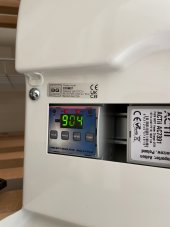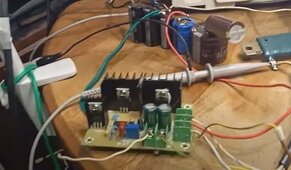charliefleet
New Member
- Joined
- Sep 15, 2022
- Messages
- 17
For the ACTII AC7391 PWM MPPT Heater Controller... it mentions matching heater to panels. Knowledge base (actii.pl/knowledge/?p=14). Bearing in mind this is a Polish translation, it says "Remember that if you use a stronger heater or a weaker one, it will not be corrected and may overload the PWM controller, and after it leads to its damage after several months of such work". So the inference is seeking to roughly match resistance of panels and heater load.A 12V panel will put out 17-18V at power point. You would want a lower wattage 12V element than the panel wattage.
element 300W /12V = 25A 12V/ 25A = .48 ohms
panel 300W /17V = 17.6A 17V/ 17.6A = .96 ohms 8.44v x 17.6A = 148W with 300W 12V element
element 300W /24V = 12.5A 24V/ 12.5A = 1.92 ohms
element 600W /24V = 12.5A 24V/ 25A = .96ohms 300W
In my case, the panels are 41.3v (Vmp) @ 11 Amps (Imp) = 3.75 Ohms each. Connected in series = 3 x 3.75 = 11.3 Ohms.
For the heater. I have an existing 3,000w 230v AC element. This draws a current of 13 Amps. Hence resistance is 17.6 Ohms.
I'm not sure whether this represents a significant mis-match?
And note that on first impression you might look to fit a 2Kw element instead, but the resistance of such an element would be 26.5 Ohms - an even greater mis-match.
I'm going to stick with zero change to the 3kw element and monitor to see how the system copes.
Obviously i could simply buy a lower voltage element that simply gives the best resistance match... something like a 1.2Kw at 120v would be perfect as this gives 12 Ohms.





